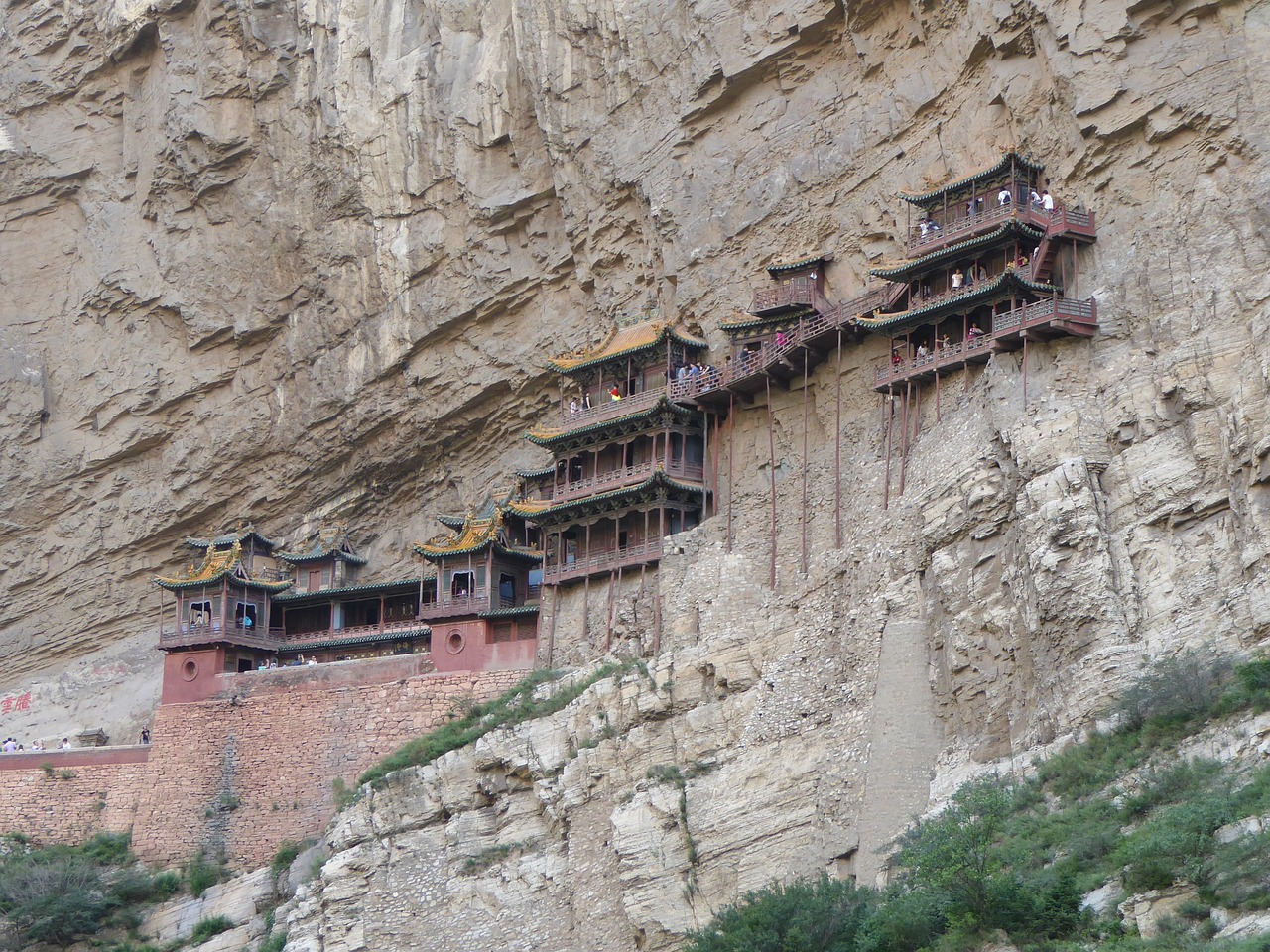the Xuankong Temple
Xuankong Temple, located on the cliffs of Mount Hengshan in Hunyuan County, Datong City, Shanxi Province, China, is one of the most cliff-hanging ancient buildings existing in China and a unique Buddhist architectural wonder in the world. Built in 491 A.D., the Hanging Temple was first constructed during the Northern Wei Dynasty, and then underwent many restorations and expansions to form the scale and appearance it has today. The temple is built on a cliff, mainly composed of the main hall, the second hall and the third hall, with more than 40 halls and more than 1,000 square metres of floor space. It is famous for its construction method which is not only embedded in the cliff, but also up to 50 metres from the ground.
The architectural style of the Xuankong Temple combines elements of Taoism, Buddhism and Confucianism, making it one of the masterpieces of ancient Chinese architectural art. The temple enshrines statues of Shakyamuni, Guanyin and Manjushri, all of which are finely carved and in different forms. The temple buildings are all supported by beams and pillars suspended from the cliff, making the structure unique and the craftsmanship exquisite and intriguing. The Xuankong Temple also preserves a large number of historical relics and inscriptions, reflecting its long history and rich cultural connotations.
In addition to the peculiarities of the building itself, the natural landscape around the Xuankong Temple is also a major feature. The temple is located in a high mountainous area with different sceneries in all seasons, especially in autumn when the layers of forests and red leaves fill the mountains, attracting many tourists to come to watch and photograph. The Xuankong Temple is not only an important place of religious belief, but also an important representative of ancient Chinese architectural art and landscape culture, which has become a world cultural heritage and a must-visit place for domestic and foreign tourists.

